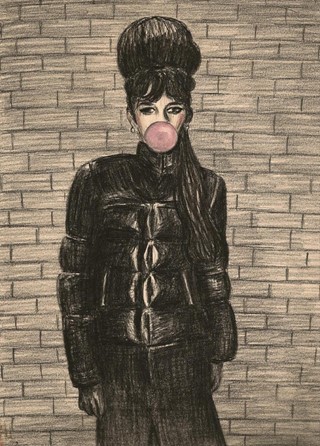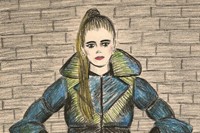In general, designers were not scared of turning up the volume for autumn 2012. At Comme des Garcons, Rei Kawakubo fielded outsized separates that looked as if they had been flat-cut out for a dress-me doll twice as big as the models in the show.
In general, designers were not scared of turning up the volume for autumn/winter 2012. At Comme des Garçons, Rei Kawakubo fielded outsized separates that looked as if they had been flat-cut out for a dress-me doll twice as big as the models in the show. At Jil Sander, Raf Simons explored proportion in a nostalgic couture-inspired vein, and at Acne too, shape and fit were unexpected and exaggerated.
But several names took the voluminous trend to its most literal conclusion, dressing models in that most familiar and feted garment, the Puffa jacket.
Once the preserve of dog-walkers, Scary Spice and The Fast Show, this cosy and practical piece was given a high-fashion overhaul by the likes of Alexander Wang, where black duvet jackets were slick and rubber-like, and London-based duo Peter Pilotto, whose version of the cushioned coat had been blended into a sequence of strict tailored and body-conscious peplum jackets decorated with a kaleidoscopic print.
Part of the puffa's appeal is, most obviously, its warmth. A patented compound of synthetic fibres – although some models use down or feathers - conducts heat to even the chilliest of hearts. But the puffa’s fashionability and cult status bely the fact it is a true techno-garment, a truly modern insulator, originally dreamed up in laboratory and latterly re-worked by some of the most prescient propitiators of street and urban trends: Jun Takahashi of UnderCover has worked with the medium to develop hard-wearing and modernist performance wear – the most recent fruits of his labours are now available at Uniqlo.
And Kawakubo too has played with the proportion-enhancing qualities of fillings such as kapok to give clothes an unusual and mutant aspect, filled with unexpected and unlikely lumps and bumps, growths even, designed to explores the boundaries of space and volume.
This season however the puffa trend is sleeker, and the rehabilitation of the style owes more to the urban environment than it does to the conceptual or the climate. At Jean Paul Gaultier, puffas had the recognisably iconic fur trim – and this from a designer who once had models walk dogs up and down his runway. Whatever next? Ugg boots? A scrunchie?
Jason Wu meanwhile made his more ladylike with lace prints, and at Burberry Prorsum, puffa coats came in the princess silhouette, banded in rich and sumptuous colours, belted with delicate, waist-enhancing bows.
Perhaps it's something to do with the Nineties revival. Or perhaps tastes have come full circle. Where once puffas were once undeniably disdained for being synthetic and a bit cheap, it is now precisely that man-made quality that designers are revelling in distorting.
Text by Harriet Walker
Harriet Walker is a fashion writer at The Independent. Her book Less is More: Minimalism in Fashion is out now, published by Merrell. Zoë Taylor is an illustrator based in London. Her work has appeared in The Guardian, Syntax Editions and Le Gun among others.


